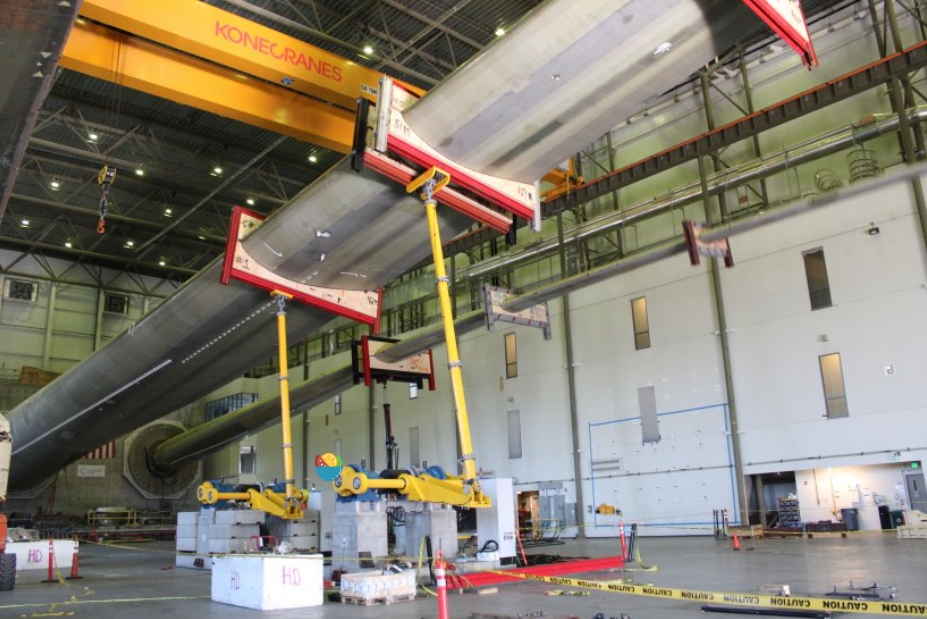
The “upgrade” button has been pressed at Massachusetts Clean Energy Center’s Wind Technology Testing Center (WTTC), funded by the U.S. Department of Energy’s Wind Energy Technologies Office (WETO). New updates enable the facility to receive and evaluate blades up to 120 meters (393 feet) long. The improved testing capability helps expedite the deployment of offshore wind power, according to DOE.
When WTTC opened in 2011, it tested land-based wind turbine blades that typically spanned around 50 meters (164 feet). Today, the WTTC is testing both land-based and offshore wind turbine blades that are growing in size as part of the industry’s move toward bigger wind turbines that can harvest more energy at lower wind speeds.
The facility was used to test the Vineyard Wind 1 project’s larger blades for over a year. Without it, the blades would have needed to be tested in Europe, adding time and cost to the process, DOE said.
The blades are mounted on the inside of the facility. Only one installation angle was previously possible, but now through a new wedge plate system, blades can be angled anywhere from zero degrees to 12 degrees.
“That way, we’re able to apply a load at different blade angles,” said Rahul Yarala, WTTC’s executive director. “We can adjust the blade angles to study different worst-case situations, like 50-year wind gusts or Category 5 hurricane wind speeds.”
The WTTC team strategically places clamps that apply loads, mimicking outdoor elements, at different points along the blade. The recent improvements have expanded the number of possible load points (points of potential stress on the blade) from 8 to 11, which is necessary to accommodate the increased blade length.
The tests at WTTC simulate two decades of wear and tear over the course of a few months.
“We apply a load over millions of cycles to simulate the full life of a wind turbine blade in the field,” Yarala said. “To do that, we need the exciter systems to be able to provide the required energy input.”
The new testing techniques can also simultaneously move the blade in both flap and edge directions, which is known as biaxial blade testing. While biaxial blade testing is not yet common practice, the facility upgrade has allowed WTTC to develop it further.
Up to 300 sensors placed along the wind turbine blade transmit data about how the blade responds to forces applied during testing. The WTTC updates also included hardware and software systems that can handle the increase in data that comes with longer blades.